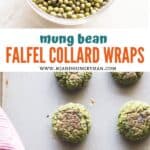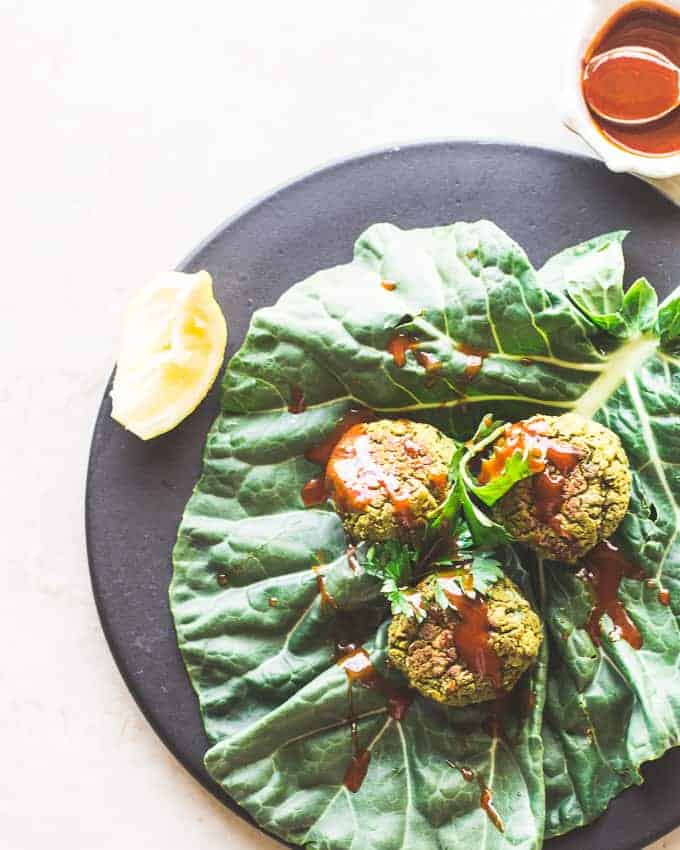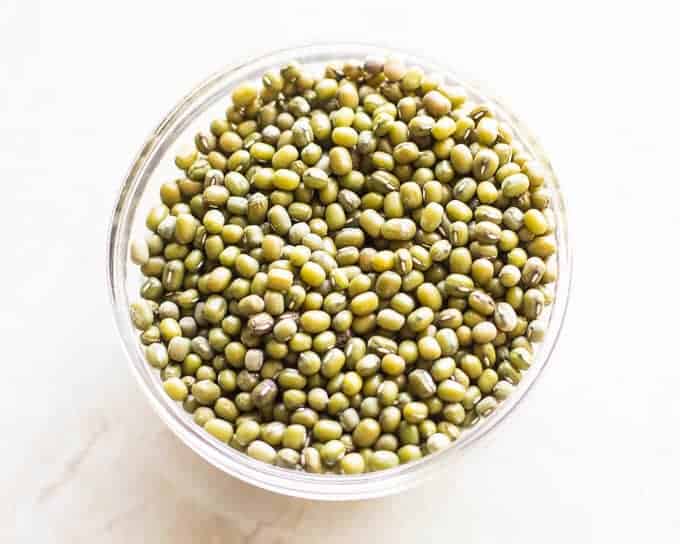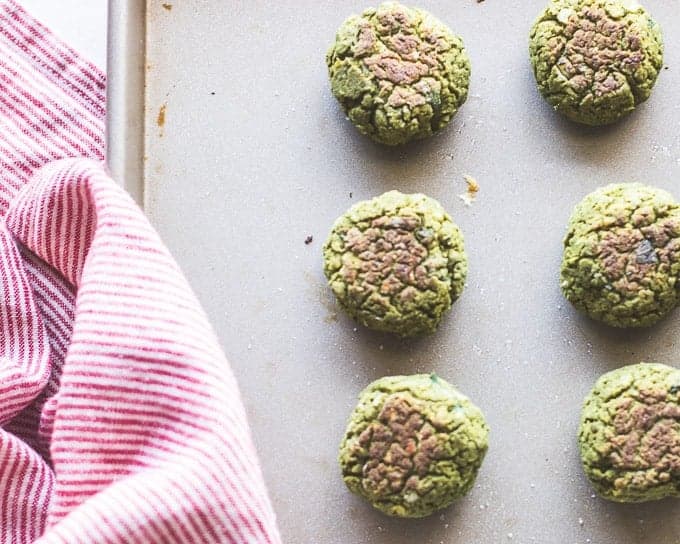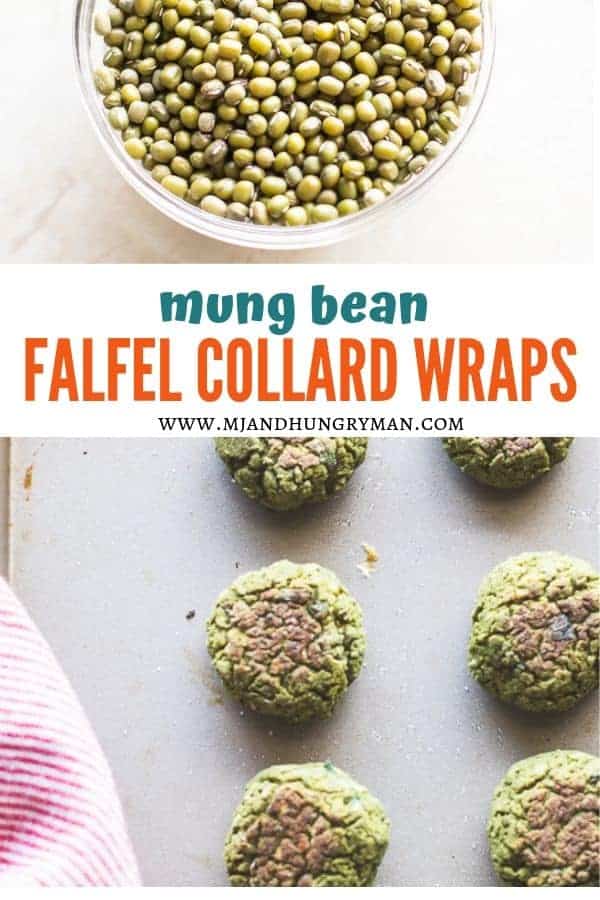If you read my post from earlier this week and saw these cheese stuffed kimchi pancakes, you’ve been introduced to a new ingredient in my kitchen – mung beans. Like I said, it’s not that I had never had mung beans, I just hadn’t cooked with them before. So in light of this month’s Recipe Redux challenge of cooking with a new and unusual ingredient, I thought I’d make my mom proud and perhaps discover another pantry staple in the process. To start, let’s talk about what they are and why it’s a good idea to incorporate them into our diet. Mung beans are a legume, just like beans, peas, and lentils. And if you didn’t know, 2016 is the year of the #pulses! To celebrate, I joined the Pulse Pledge Challenge, which means I’ll be eating pulses at least once a week for the next 10 weeks. I heart lentils and peas, and beans are quite tasty, so I know I’m going to rock out! However, I find myself always gravitating toward chickpeas…and more chickpeas. So mung beans, you entered my life at the right time!
Like all legumes, mung beans are packed with nutrients. In particular, they are an excellent source of potassium, folate, magnesium, vitamin C, various B vitamins (e.g. thiamine and B6), and fiber. They also provide 7g of protein per ounce, which is equivalent to 1 egg. What I also love about these green-colored beans is that they are easily digestible and contain certain compounds that minimize gas and bloating. So if you are one that’s sensitive to beans and can’t have too much, give these mung beans a try! Mung beans can be found in whole, split, and hulled forms. I purchased a HUGE bag of whole mung beans at my Asian grocery store because I thought they’d be most versatile. After about 2 weeks of experimenting, I can say that they make a great addition to just about any dish. Dips, soups, salads…you name it! And of course, pancakes and now….falafel!
When you soak the beans and then puree them, they turn into this thick batter that holds its shape beautifully once cooked. That means no additional flour is necessary. However, I did try adding a little bit of sweet rice flour (a common ingredient in Korean pancakes), and it made the pancakes and falafel even crispier. Now my crazy obsession with falafel is of no secret (I even had it when I was in New Zealand). Thus, I contemplated long and hard as to whether or not I wanted to tamper with the traditional flavors. However, incorporating Asian flavors into dishes is what I do, so I just went for it. Please forgive me, all you falafel purists out there. But I think even y’all might appreciate this makeover ;). [Tweet “Mung Bean Falafel Collard Wrap – a delicious twist on a classic! #thereciperedux #lovepulses #glutenfree “] I chose collard greens as the wrapping vessel of choice because they were just too beautiful to pass up at the Farmer’s Market. However, feel free to use whatever you’d like!
